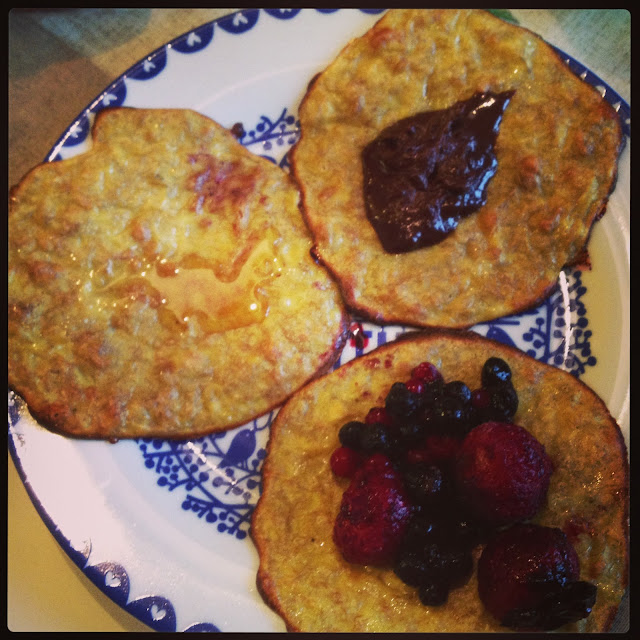Sunday is my only free day so I usually like to sleep late and make an effort when preparing breakfast (which is usually eaten at a more lunch-like hour). This week I discovered a great new recipe blog, and the pancake recipe is from there. Today's brunch consisted of pancakes with chocolate sauce, organic berries and maple syrup. It was all a little sweet for my usual taste, but hey it's Sunday.
Banana & peanut butter pancakes (for 1)
1 very ripe banana
1 egg
a tiny amount of baking soda
1 tbsp peanut butter
a little salt
1. Put the oven on 200°C.
2. Mash the banana until smooth. Add the remaining ingredients and mix.
3. Pour the dough into 4 pancakes on a baking tray with baking paper.
4. Bake for 15-20 min or until golden brown.
Chocolate sauce
2 tbsp butter or coconut oil
2 tsp honey
2 tbsp raw cacao powder
1/2 tsp bourbon vanilla
Mix all the ingredients in a bowl and that's it. Although if the butter is very hard you might want to put the bowl in some hot water for a while to soften it.
Emma
Banana & peanut butter pancakes (for 1)
1 very ripe banana
1 egg
a tiny amount of baking soda
1 tbsp peanut butter
a little salt
1. Put the oven on 200°C.
2. Mash the banana until smooth. Add the remaining ingredients and mix.
3. Pour the dough into 4 pancakes on a baking tray with baking paper.
4. Bake for 15-20 min or until golden brown.
Chocolate sauce
2 tbsp butter or coconut oil
2 tsp honey
2 tbsp raw cacao powder
1/2 tsp bourbon vanilla
Mix all the ingredients in a bowl and that's it. Although if the butter is very hard you might want to put the bowl in some hot water for a while to soften it.
Emma












